
Pechenga is an urban locality in Pechengsky District, Murmansk Oblast, Russia. Municipally, it is incorporated as Pechenga Urban Settlement of Pechengsky Municipal District. Population: 3,188 (2010 Census); 2,959 (2002 Census); 2,671 (1989 Soviet census).

Dubna is a town in Moscow Oblast, Russia. It has a status of naukograd, being home to the Joint Institute for Nuclear Research, an international nuclear physics research center and one of the largest scientific foundations in the country. It is also home to MKB Raduga, a defense aerospace company specializing in design and production of missile systems, as well as to the Russia's largest satellite communications center owned by Russian Satellite Communications Company. The modern town was developed in the middle of the 20th century and town status was granted to it in 1956. Population: 70,663 (2010 Census); 60,951 (2002 Census); 65,805 (1989 Soviet census).

The Soviet Navy was the naval warfare uniform service branch of the Soviet Armed Forces. Often referred to as the Red Fleet, the Soviet Navy made up a large part of the Soviet Union's strategic planning in the event of a conflict with the opposing superpower, the United States, during the Cold War (1945–1991). The Soviet Navy played a large role during the Cold War, either confronting the North Atlantic Treaty Organization in western Europe or power projection to maintain its sphere of influence in eastern Europe.

The Grisha class, Soviet designation Project 1124 Al'batros, are a series of anti-submarine corvettes built by the Soviet Union between 1970 and 1990 and later by Russia and Ukraine. These ships have a limited range and are largely used only in coastal waters. They have been equipped with a variety of ASW weapons and an SA-N-4 'Gecko' surface-to-air missile launcher. All were fitted with retractable fin stabilizers.

The Joint Institute for Nuclear Research, in Dubna, Moscow Oblast, Russia, is an international research center for nuclear sciences, with 5,500 staff members including 1,200 researchers holding over 1,000 Ph.Ds from eighteen countries. Most scientists are scientists of the Russian Federation.
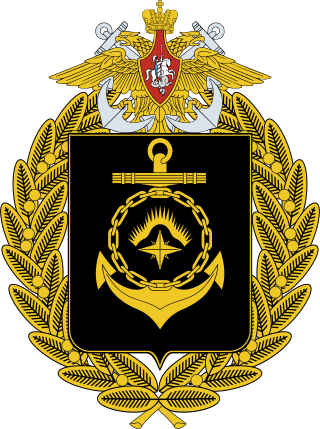
The Northern Fleet is the fleet of the Russian Navy in the Arctic.
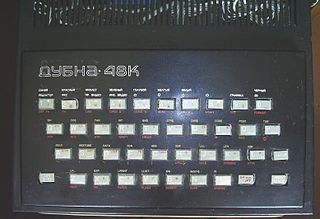
The Dubna 48K is a Soviet clone of the ZX Spectrum home computer launched in 1991. It was based on an analogue of the Zilog Z80 microprocessor. Its name comes from Dubna, a town near Moscow, where it was produced on the "TENSOR" instrument factory, and "48K" stands for 48 KBs of RAM.

Nikolay Nikolayevich Bogolyubov was a Soviet, Ukrainian and Russian mathematician and theoretical physicist known for a significant contribution to quantum field theory, classical and quantum statistical mechanics, and the theory of dynamical systems; he was the recipient of the 1992 Dirac Medal for his works and studies.

The Pechenga Monastery is and has been for many centuries the northernmost monastery in the world. It was founded in 1533 at the influx of the Pechenga River into the Barents Sea, 135 km west of modern Murmansk, by St. Tryphon, a monk from Novgorod.

Vladimir Iosifovich Veksler was a prominent Soviet experimental physicist.
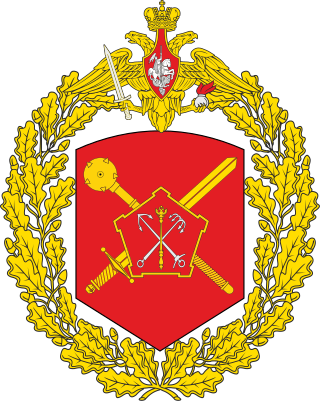
The 6th Red Banner Combined Arms Army is a field army of the Red Army and the Soviet Army that was active with the Russian Ground Forces until 1998 and has been active since 2010 as the 6th Combined Arms Army. Military Unit number в/ч 31807.
The 45th Rifle Division was a Red Army infantry division formed originally during the Russian Civil War that fought in World War II and then served through the Cold War in the Leningrad Military District.

E105 is part of the International E-road network, which is a series of main roads in Europe. It is a north–south reference road, meaning it crosses Europe from north to south, and other E-road numbers have been calculated based on these reference roads.
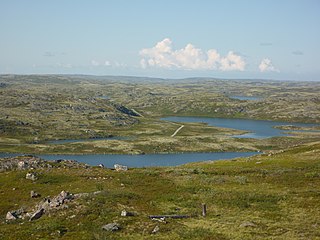
Pechengsky District is an administrative district (raion), one of the six in Murmansk Oblast, Russia. As a municipal division, it is incorporated as Pechengsky Municipal District. It is located in the northwest of the oblast, on the coast of the Barents Sea and borders Finland in the south and southwest and Norway in the west, northwest, and north. The area of the district is 8,662.22 square kilometers (3,344.50 sq mi). Its administrative center is the urban locality of Nikel. Its population was 38,920 (2010 Census); 46,404 (2002 Census); 59,495 (1989 Soviet census). The population of Nikel accounts for 32.8% of the district's total population.

Indonesia–Russia relations are the bilateral relations between Indonesia and Russia. Indonesia and the Soviet Union established diplomatic relations in 1950. Russia has an embassy in Jakarta, and Indonesia has an embassy in Moscow along with a consulate general in Saint Petersburg. Both countries are members of the APEC and G-20.

The Tapir-class landing ship, Soviet designation Project 1171 landing ship is a class of Soviet/Russian general purpose, beachable amphibious warfare ships.
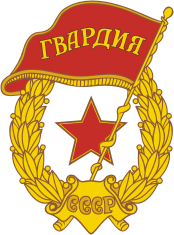
The 10th Guards Motor Rifle Division was a division of the Soviet Ground Forces. The full name of its predecessor division was the 10th Guards Rifle Pechengskii, Twice Order of the Red Banner, Order of Alexander Nevsky, Order of the Red Star Division. The 10th Guards Rifle Division was formed from the 52nd Rifle Division in late 1941.

The 200th Separate Guards Motor Rifle Pechenga Order of Kutuzov Brigade is a military formation of the 14th Army Corps, part of the Leningrad Military District, based at Pechenga in Murmansk Oblast. The brigade was formed from the 131st Motor Rifle Division in 1997 and was one of the two Russian Arctic warfare brigades.
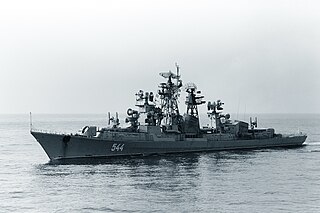
Sposobny was a Project 61 destroyer of the Soviet Navy, which briefly became part of the Russian Navy. The ship served during the Cold War from 1971 to 1989.
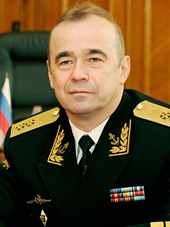
Viktor Nikolayevich Mardusin is an officer of the Russian Navy. He currently holds the rank of vice-admiral, and has most recently served as deputy commander of the Western Military District.























